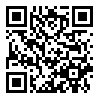Volume 9, Issue 1 (6-2017)
jorar 2017, 9(1): 75-82 |
Back to browse issues page
Download citation:
BibTeX | RIS | EndNote | Medlars | ProCite | Reference Manager | RefWorks
Send citation to:



BibTeX | RIS | EndNote | Medlars | ProCite | Reference Manager | RefWorks
Send citation to:
Norouzinia R, Mirzaee S, Atighechian G. Preparation and response of prehospital services (case study: Plasco building fire). jorar 2017; 9 (1) :75-82
URL: http://jorar.ir/article-1-339-en.html
URL: http://jorar.ir/article-1-339-en.html
PhD Student in Disaster & Emergencies Health, Health Management and Economics Research Committee, School of Management and Medical Information, Isfahan University of Medical Sciences, Isfahan, Iran
Abstract: (3486 Views)
Introduction: Fire accidents are considered as one of the most important risks for human beings from a long time ago which leads to loss of life, physical and psychological injuries, loss of properties as well as adverse economic effects on governments. In recent years, there have been many fire incidents in the country and one of the most influential events is the Plasco building fire. This study was conducted to examine and analyze the preparedness and provide prehospital services to the mentioned incident.
Method: This case study was conducted in two stages in 2016. At the initial stage, all documentation and reports available on news sites and scientific associations and the national report were extracted and analyzed. In the next stage, through a semi-structured interview the experiences of pre-hospital emergency staff were extracted at the time of the incident.
Findings: According to Tehran emergency medical services statistics, the total number of casualties was 235 including 180-outpatient treatment and 55 cases transfer to hospital (one died and the other injured were discharged after treatment). The most important cause of injury was respiratory problems, and most of the victims were firefighting operation staff, and debris, search and rescue workers. The prehospital staff were not settled in the safe area and personal protective equipment was not used properly. In addition, the distribution of injuries in health centers has not been appropriate.
Conclusion: The results show that calling of forces and equipment was carried out based on objective observations without an accurate assessment in mentioned incident. One of the biggest challenges in providing prehospital services is the available traditional and non-scientific approach to estimate the equipment needed after an incident and lack of a codified instruction in this regard.
Method: This case study was conducted in two stages in 2016. At the initial stage, all documentation and reports available on news sites and scientific associations and the national report were extracted and analyzed. In the next stage, through a semi-structured interview the experiences of pre-hospital emergency staff were extracted at the time of the incident.
Findings: According to Tehran emergency medical services statistics, the total number of casualties was 235 including 180-outpatient treatment and 55 cases transfer to hospital (one died and the other injured were discharged after treatment). The most important cause of injury was respiratory problems, and most of the victims were firefighting operation staff, and debris, search and rescue workers. The prehospital staff were not settled in the safe area and personal protective equipment was not used properly. In addition, the distribution of injuries in health centers has not been appropriate.
Conclusion: The results show that calling of forces and equipment was carried out based on objective observations without an accurate assessment in mentioned incident. One of the biggest challenges in providing prehospital services is the available traditional and non-scientific approach to estimate the equipment needed after an incident and lack of a codified instruction in this regard.
Short Reports or Letters: Review |
Subject:
حمایت روانی در سوانح
Send email to the article author
| Rights and permissions | |
 |
This work is licensed under a Creative Commons Attribution-NonCommercial 4.0 International License. |






